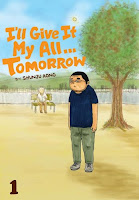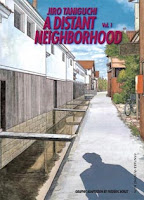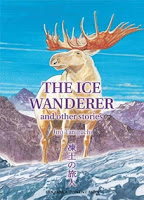 Author: Tetsu Kariya
Author: Tetsu Kariya
Illustrator: Akira Hanasaki
U.S. publisher: Viz Media
ISBN: 9781421521411
Released: May 2009
Original release: 2005
Awards: Shogakukan Manga Award
Oishinbo, written by Tetsu Kariya and illustrated by Akira Hanasaki, is an incredibly successful and well-loved manga series in Japan. The manga began serialization in 1983 and is still ongoing; more than one hundred volumes have been published so far. In 1987 the series won a Shogakukan Manga Award. Oishinbo, A la Carte, the only version of the manga that has been licensed in English, selects stories from throughout the original series to create thematic collections that focus on a particular food or cuisine. Oishinbo, A la Carte: Ramen & Gyōza was the second of these collections to have been published in Japan and was the third volume to be released in English by Viz Media, following Japanese Cuisine and Sake. As a bit of a foodie myself, I have really been enjoying the Oishinbo, A la Carte collections. I was particularly interested in Ramen & Gyōza because those foods, although Chinese in origin, were my introduction to Japanese cuisine. I’m finally getting around to reading the volume thanks to the Oishinbo Manga Moveable Feast.
The basic premise of Oishinbo is fairly simple: Yamaoka Shirō has been charged by Tōzai News to create the “Ultimate Menu” of Japanese cuisine. In response, their rival newspaper Teito Times has hired Kaibara Yūzan, who happens to be Yamaoka’s estranged father, to develop the “Supreme Menu.” The father-son relationship between the two men was already strained; the menu projects give them yet another reason to come into conflict. They can’t help but challenge each other, Yamaoka constantly trying to show his father up and Kaibara constantly trying to put his son into his place. I find the six stories collected in Ramen & Gyōza particularly interesting for a couple of reasons. Although ramen and gyōza have been incorporated into Japanese cuisine, they were originally developed from Chinese cooking traditions. Additionally, both ramen and gyōza are everyday comfort foods and are therefore frequently considered to be low-class. It amuses me greatly that Yamaoka and Kaibara, who are so concerned with finding the pinnacle of Japanese food culture, can get into fights even over dishes that they had both at one point written off as not worth their time.
It should be fairly obvious that Ramen & Gyōza is about ramen and gyōza, but there was another theme that I particularly noticed in this volume of Oishinbo, A la Carte. Importance is placed on the quality of the ingredients used in a dish, although it is not the only factor needed for it to be successful. Yamaoka and the other characters, especially his father, emphasize the need for a safe and sustainable food culture, free of chemicals and ideally locally produced. This is certainly a notion that I personally support, but Kariya has never been subtle with his characters’ opinions in Oishinbo. In some cases their apparent activism can be somewhat distracting from the story while at other times it is expertly incorporated into the narrative itself. Of course, the fact that the characters get so worked up over food is one of the reasons that Oishinbo is so entertaining. Take away their ranting and raving and suddenly the series would be much less engaging.
Because Oishinbo, A la Carte: Ramen & Gyōza only collects selected stories from the original Oishinbo manga, it is difficult for readers to get a good sense of the overarching plot and chronology of the series. However, the six stories in Ramen & Gyōza make good selections because they stand on their own rather well. Any important plot points that aren’t immediately obvious are explained in the translation notes. Ramen & Gyōza is actually mostly about ramen and other Chinese-style noodles. I was a little disappointed that gyōza was only featured in one of the stories, but at least it was the longest one. Perhaps because ramen and gyōza are so common and familiar, the manga didn’t go too in depth into the particulars of the specific foods but focused more on people’s interactions with them instead. For some reason I didn’t find Ramen & Gyōza to be quite as compelling as the previous two volumes of Oishinbo, A la Carte, but I still enjoyed myself immensely and look forward to reading more.















